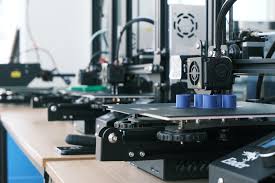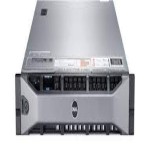Many businesses have a love-hate relationship with BYOD. Allowing employees to “bring your own device” has its benefits, but it also gives rise to certain challenges and risks. If you choose to take a BYOD approach to device management, it’s crucial that appropriate steps are taken to strengthen security and protect business productivity.
Whether your employees already use personal devices at work, or you’re considering implementing a BYOD policy, this guide contains everything you need to know.
What is BYOD?
BYOD stands for Bring Your Own Device, and refers to a business policy that allows employees to use their own devices in the course of their work. BYOD applies to laptops, tablets, phones, and any other personal devices that an employee uses to perform their role or access company resources.
Whether employees exclusively use their own devices, or occasionally work from a personal phone or laptop alongside a company-issued device, business leaders should employ effective BYOD management to harness the benefits of BYOD while mitigating risks.
The Top 3 Benefits of BYOD
BYOD is most popular among startups and fast-growing companies with limited resources. In these scenarios, BYOD allows new employees to get started quickly, with minimal device-related costs. The 3 main benefits of BYOD are:
1. Productivity
BYOD employees are often more productive when working on a familiar device and operating system. In addition, less training is required as part of the onboarding process.
2. Flexibility
In today’s hybrid and remote work environments, BYOD supports employees to seamlessly switch between devices and locations.
3. Cost Savings
For growing businesses with limited resources, BYOD can save your company money through not having to purchase brand new devices for every employee.
3 Cons of BYOD
Despite the benefits, BYOD is not without its challenges. High-risk or heavily regulated industries should generally avoid this approach, as personal devices are an attractive target for potential hackers, and tech issues are more likely to slow progress.
1. Security
BYOD leaves your business exposed to a wide range of threats as employees potentially access sensitive company data from unsecured devices. Employee privacy is also a concern, as the lines between personal and professional device usage are blurred.
2. Compatibility
Relying on a broad variety of device types and operating systems can give rise to compatibility issues and a lack of cohesion in team collaboration.
3. Downtime
If an employee’s personal device crashes unexpectedly, it can take much longer to repair or replace than a company device, especially in remote work environments.
BYOD Management: How Does BYOD Work?
While BYOD hands a certain amount of responsibility over to individual employees, it’s critical that businesses maintain visibility and control over how sensitive data and resources are accessed from various devices.
Mobile Device Management
Mobile Device Management (MDM) is core to safe and effective BYOD management. All applicable employee devices should be enrolled in an MDM solution to remotely enforce cybersecurity measures, monitor performance, and configure user access permissions.
User Support
While your company may not provide the devices used by employees, it is recommended that technical support is still made available to BYOD users to optimize uptime and assist with troubleshooting or other device issues.
Security Controls
Enhanced cybersecurity is non-negotiable in a BYOD environment. BYOD management involves data protection measures, controlled access to your network, and continuous monitoring for potential breaches. We’ll take a more detailed look at BYOD and cybersecurity in the next section.
BYOD and Cybersecurity: How to Secure BYOD Devices
BYOD offers flexibility and savings, but it also leaves your business vulnerable to certain cybersecurity threats. To secure BYOD devices, businesses must adopt the following best practices:
1. Use an MDM Solution
A Mobile Device Management solution gives you the ability to remotely roll out security updates on employee devices, restrict and grant access to sensitive data, and wipe devices clean in the event of theft. Enroll all applicable devices in your MDM solution to maintain security and visibility.
2. Secure Your Network
A breach from a single device has the potential to penetrate your entire business network. Upgrade your network security to mitigate BYOD threats, control access, and contain any breaches before they spread.
3. Enforce Strong Passwords and MFA
Multi-Factor Authentication (MFA) requires employees to provide an additional set of credentials beyond their username and password when accessing sensitive data. Paired with the use of strong passwords, MFA adds a further layer of security to your BYOD management.
4. Create a BYOD Policy
If your employees use personal devices to access company resources in any capacity, your business needs an BYOD policy. This policy sets out best practices for secure device usage and should be accompanied by regular employee training.
How to Create a BYOD Policy
A BYOD policy sets out a company’s rules and requirements for responsible device usage by employees. By setting clear expectations and transparently communicating how devices are monitored, a BYOD policy strengthens your security posture while addressing any employee concerns.
BYOD Policy Template
Every company’s BYOD policy will differ based on their unique needs, as well as any applicable regulatory or compliance requirements. However, the following BYOD policy template outlines the core sections that every business should include.
Acceptable Use: Outline any websites or applications that employees are not permitted to access for security reasons. Clearly state that employees should not click on suspicious links or download unknown content that could infect their device or put company data at risk.
Security Requirements: Inform employees that their devices must be enrolled in your MDM solution and monitored for security purposes. List the minimum security requirements that all devices must adhere to and include details of your password policy.
Privacy: Inform employees how their personal information is protected if their devices are used for both personal and professional purposes. Outline the situations in which devices may be remotely locked or wiped.
Support: Detail the level of user support available to employees in the event they experience technical issues on their personal devices in the course of their work.
Contractors and External Users: Your BYOD policy should also include acceptable usage guidelines for external contractors who may temporarily have access to your network.
Secure BYOD Management
BYOD management can seem like a daunting task for growing businesses, but proactive monitoring and enhanced security are critical to power growth and keep your data safe. To learn more about centralized device management, get in touch with Electric today.









